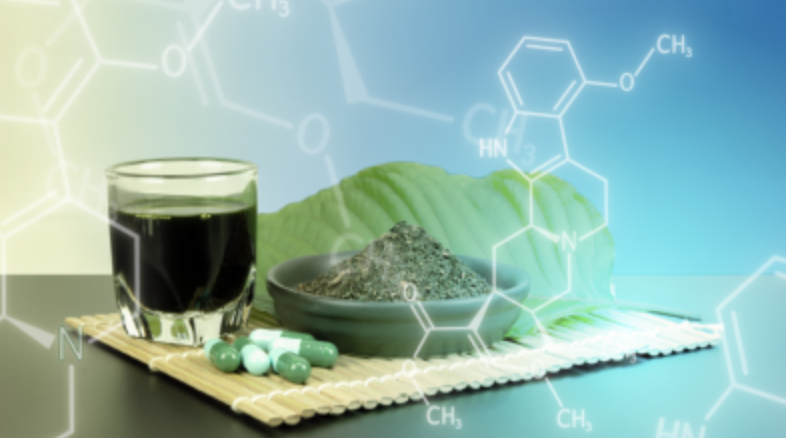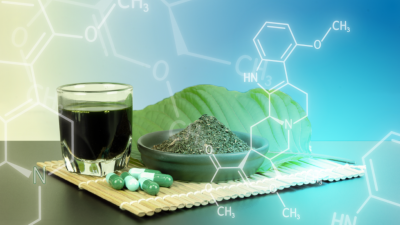The FDA once again declared kratom in America unlawful in their viewpoint and announced their intent to remove access to kratom in America.
From the page: “Kratom is not appropriate for use as a dietary conventional supplement…Further, FDA has determined that kratom, when added to food, is an unsafe food additive…
Based on these determinations by FDA, kratom is not lawfully marketed as a dietary supplement and cannot be lawfully added to conventional foods.
Therefore, kratom is not lawfully marketed in the U.S. as a drug product, a dietary supplement, or a food additive in conventional food.”
This article was taken from what the FDA has to say about kratom…DO YOU AGREE?
FDA and Kratom
(FDA Website July 2023)
Kratom is a tropical tree (Mitragyna speciosa) that is native to Southeast Asia. Products prepared from kratom leaves are available in the U.S. through sales on the Internet and at brick-and-mortar stores. Kratom is often used to self-treat conditions such as pain, coughing, diarrhea, anxiety and depression, opioid use disorder, and opioid withdrawal. An estimated 1.7 million Americans aged 12 and older used kratom in 2021, according to the Substance Abuse and Mental Health Services Administration’s National Survey on Drug Use and Health.
There are no drug products containing kratom or its two main chemical components that are legally on the market in the U.S. FDA has not approved any prescription or over-the-counter drug products containing kratom or its two main chemical components, mitragynine and 7-hydroxymitragynine (7-OH-mitragynine). If a new drug application (NDA) is submitted for kratom (or one of its components) to treat a specific medical condition, FDA will review the scientific data to determine if a drug product containing kratom (or its components) is safe and effective to treat that specific medical condition. Consistent with FDA’s practice with unapproved substances, until the agency scientists can evaluate the safety and effectiveness of kratom (or its components) in the treatment of any medical conditions, FDA will continue to warn the public against the use of kratom for medical treatment. The agency will also continue to monitor emerging data trends to better understand the substance and its components.
Kratom is not appropriate for use as a dietary conventional supplement. FDA has concluded from available information, including scientific data, that kratom is a new dietary ingredient for which there is inadequate information to provide reasonable assurance that such ingredient does not present a significant or unreasonable risk of illness or injury and, therefore, dietary supplements that are or contain kratom are adulterated under section 402(f)(1)(B) of the FD&C Act. Further, FDA has determined that kratom, when added to food, is an unsafe food additive within the meaning of section 409; food containing an unsafe food additive, such as kratom, is adulterated under section 402(a)(2)(C)(i). Based on these determinations by FDA, kratom is not lawfully marketed as a dietary supplement and cannot be lawfully added to conventional foods.
Therefore, kratom is not lawfully marketed in the U.S. as a drug product, a dietary supplement, or a food additive in conventional food. For more information on this topic or FDA’s seizure alerts, see Seizures and Injunctions.
What can happen if a person uses kratom?
FDA has warned consumers not to use kratom because of the risk of serious adverse events, including liver toxicity, seizures, and substance use disorder (SUD). In rare cases, deaths have been associated with kratom use, as confirmed by a medical examiner or toxicology reports. However, in these cases, kratom was usually used in combination with other drugs, and the contribution of kratom in the deaths is unclear.
Cases of kratom-related SUD have also been observed. In these cases, individuals met certain criteria for SUD, including using kratom for longer than intended, using more kratom than intended, having cravings for kratom, continuing to use kratom despite adverse consequences (either physically or in their personal life), increasing the amount of kratom used to produce the same effect (tolerance), and experiencing withdrawal symptoms when kratom use was stopped (physical dependence).
FDA is also aware of cases involving neonatal abstinence syndrome, in which newborns experienced withdrawal signs such as jitteriness, irritability, and muscle stiffness following prolonged exposure to kratom prior to birth.
FDA has warned the public when certain kratom products were contaminated with Salmonella and/or concerning levels of heavy metals. These contaminants can put people at risk and can result in numerous documented illnesses.
How does kratom act on the brain to cause its effects?
Kratom contains two main chemical compounds, mitragynine and 7-OH-mitragynine, both of which bind to the same receptors in the brain (mu opioid receptors) as opioid drugs such as codeine. Mitragynine and/or 7-OH-mitragynine also have additional mechanisms of action on other chemical systems of the brain, including serotonin, dopamine, norepinephrine, and kappa opioid receptors.
How is FDA protecting the public from the risks of kratom?
FDA has not approved any prescription or over-the-counter drug products containing kratom or its two main chemical components, mitragynine and 7-OH-mitragynine. There are no drug products containing kratom or its two main chemical components that are legally on the market in the U.S., and FDA has warned against the use of unapproved kratom products for medical treatment.
FDA has also taken steps to limit the availability of unlawful kratom products in the U.S. We will continue to work with our federal partners to warn the public about risks associated with use of kratom.
FDA regularly exercises its authority to protect consumers from firms selling unapproved kratom drug products and making false or misleading claims about unproven “benefits” of kratom. FDA has partnered with U.S. Customs and Border Protection and with the Department of Justice to take numerous actions to limit the sale of unlawful kratom products in the U.S., such as refusing shipments of kratom and seizing kratom products.
Unapproved drug products are one of the most challenging areas that FDA regulates, due to the complex and fragmented supply chain of distributors, wholesalers, retailers, and even individuals. These entities are not usually registered with FDA, may operate out of residences, and distribute kratom through sales made on the internet, social media, and small stores, using the mail or other package delivery services. Kratom-containing drug products have been shipped through U.S. and international mail facilities and falsely may be declared as other items, such as potpourri or incense.
FDA recognizes that there is much that is not known scientifically about kratom. Although there are published animal studies with kratom extracts containing mitragynine or 7-OH-mitragynine, there are few published reports from well-designed scientific studies where kratom was administered to humans. Additional investigation by researchers, including those in the academic community, drug companies, and government agencies, into the many safety tissues and potential therapeutic uses of kratom would provide important public health information.Research on Safety Issues
The chemical compounds found in kratom, mitragynine and 7-OH-mitragynine, may produce classic opioid-related effects such as sedation, nausea/vomiting, constipation, physical dependence/withdrawal, and respiratory depression that may lead to death. However, as with all drugs, the ability of kratom to cause harmful responses will depend on how much of the drug is taken and under what conditions.
One additional safety concern with kratom is that of abuse potential. There are epidemiological data suggesting that some individuals develop substance use disorder following kratom use. To date, a well-designed human abuse potential study has not been conducted that would show whether kratom, mitragynine, or 7-OH-mitragynine produce rewarding effects (such as feeling “high”) that might lead an individual to abuse kratom. This means that the abuse potential of kratom has yet to be fully understood.
Research on Possible Therapeutic Uses as a Drug
FDA recognizes that it is necessary to develop therapies for patients with unmet medical needs. FDA has numerous programs that help drug companies develop and obtain approval for new drug products. Additional information about each of these programs can be found throughout the FDA website.
If an academic investigator, other scientific researcher, or drug company was interested in conducting a scientifically valid study on the effects of kratom, mitragynine, or 7-OH-mitragynine in humans, FDA would support that research by:
- Providing information on the process needed to conduct human research with a drug, including submission of an investigational new drug (IND) application to FDA’s Center for Drug Evaluation and Research (CDER).
- Providing support for investigators interested in conducting clinical research using kratom, mitragynine, or 7-OH-mitragynine as a part of the IND process through meetings and regular interactions throughout the drug research or drug development process.
- Providing information on the specific requirements needed to develop a human drug that is derived from kratom, based on FDA’s 2016 guidance for industry: Botanical Drug Development.
- Providing support to investigators to help them understand and follow the procedures to conduct human research through the FDA Center for Drug Evaluation and Research (CDER) Small Business and Industry Assistance group.
Drug companies that are interested in kratom-related drug development are encouraged to contact the relevant CDER review division and CDER’s Botanical Review Team to answer questions related to their specific drug development program.
Research on Kratom by FDA Investigators
In addition to aiding academics and drug companies who are interested in studying kratom, FDA is planning to conduct its own clinical study with kratom through its Controlled Substance Staff (CSS), the group at FDA that assesses whether drugs have abuse potential. This small-scale human study will provide preliminary information on the safety, pharmacokinetics (evaluation of drug levels in the body), and psychological effects of kratom. The CSS study of kratom in humans will contribute to a more thorough scientific understanding of the effects of this substance in humans.
Other FDA Research Activities
Additionally, CDER’s Controlled Substance Initiative is leading two exploratory social and behavioral science research studies aimed at understanding the behavioral, social, and economic factors that influence purchase and use and the perceived health outcome expectations; as well as the impact and effect of current state kratom policies or laws on population access, use, and reported health outcomes.
While FDA continues to evaluate the available safety information about the effects of kratom, the agency encourages health care professionals and consumers to report any adverse reactions to the FDA’s MedWatch program:
- Complete and submit the report online: MedWatch Voluntary Reporting Form
- Download and complete the form, then submit it via fax at 1-800-FDA-0178
Additional Resources








